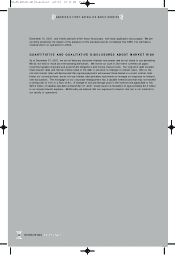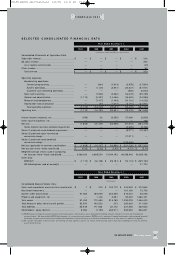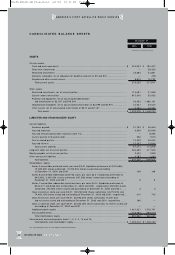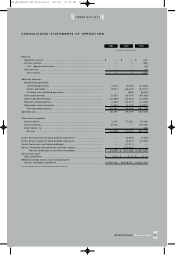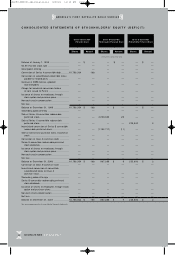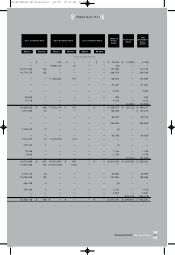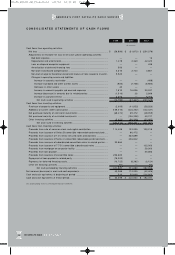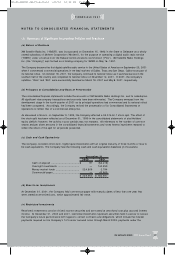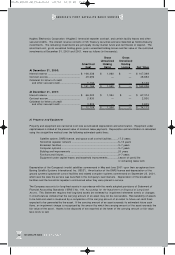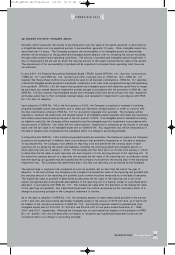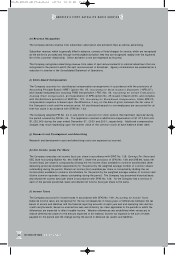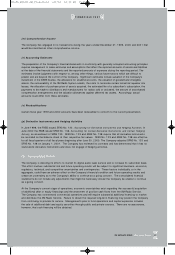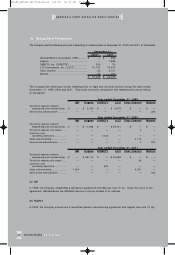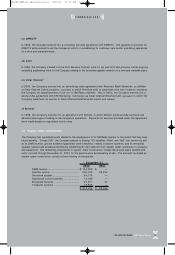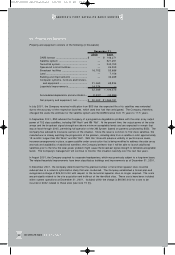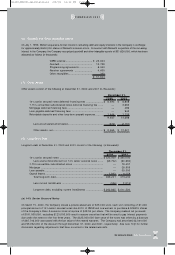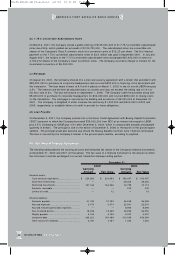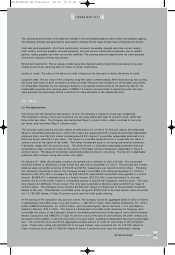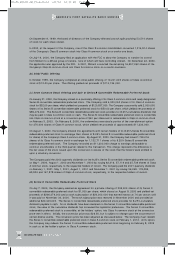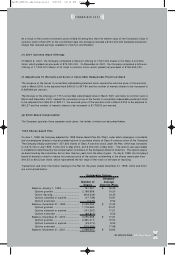XM Radio 2001 Annual Report Download - page 42
Download and view the complete annual report
Please find page 42 of the 2001 XM Radio annual report below. You can navigate through the pages in the report by either clicking on the pages listed below, or by using the keyword search tool below to find specific information within the annual report.
40 XM SATELLiTE RADiO 2 0 0 1 Annual Report
(h) Revenue Recognition
The Company derives revenue from subscriber subscription and activation fees as well as advertising.
Subscriber revenue, which is generally billed in advance, consists of fixed charges for service, which are recognized
as the service is provided and through non-refundable activation fees that are recognized ratably over the expected
life of the customer relationship. Direct activation costs are expensed as incurred.
The Company recognizes advertising revenue from sales of spot announcements to national advertisers that are
recognized in the period in which the spot announcement is broadcast. Agency commissions are presented as a
reduction to revenue in the Consolidated Statement of Operations.
(i) Stock-Based Compensation
The Company accounts for stock-based compensation arrangements in accordance with the provisions of
Accounting Principle Board (‘‘APB’’) Opinion No. 25, Accounting for Stock Issued to Employees (‘‘APB 25’’),
and related interpretations including FASB Interpretation (‘‘FIN’’) No. 44, Accounting for Certain Transactions
Involving Stock Compensation, an interpretation of APB opinion No. 25 issued in March 2000, and complies
with the disclosure provisions of SFAS No. 123, Accounting for Stock-Based Compensation. Under APB 25,
compensation expense is based upon the difference, if any, on the date of grant, between the fair value of
the Company’s stock and the exercise price. All stock-based awards to non-employees are accounted for at
their fair value in accordance with SFAS No. 123.
The Company adopted FIN No. 44 in July 20 00 to account for stock options that had been repriced during
the period covered by FIN No. 44. The application resulted in additional compensation of $ 1,213,000 and
$1,232,000 during the year ended December 31, 2000 and 2001, respectively. Additional compensation
charges may result depending upon the market value of the common stock at each balance sheet date.
(j) Research and Development and Advertising
Research and development costs and advertising costs are expensed as incurred.
(k) Net Income (Loss) Per Share
The Company computes net income (loss) per share in accordance with SFAS No. 128, Earnings Per Share and
SEC Staff Accounting Bulletin No. 98 (‘‘SAB 98’’). Under the provisions of SFAS No. 128 and SAB 98, basic net
income (loss) per share is computed by dividing the net income (loss) available to common stockholders (after
deducting preferred dividend requirements) for the period by the weighted average number of common shares
outstanding during the period. Diluted net income (loss) available per share is computed by dividing the net
income (loss) available to common stockholders for the period by the weighted average number of common and
dilutive common equivalent shares outstanding during the period. The Company has presented historical basic
and diluted net income (loss) per share in accordance with SFAS No. 128. As the Company had a net loss in
each of the periods presented, basic and diluted net income (loss) per share is the same.
(l) Income Taxes
The Company accounts for income taxes in accordance with SFAS No. 109, Accounting for Income Taxes.
Deferred income taxes are recognized for the tax consequences in future years of differences between the tax
bases of assets and liabilities and the financial reporting amounts at each year-end and operating loss and tax
credit carryforwards, based on enacted tax laws and statutory tax rates applicable to the periods in which the
differences are expected to affect taxable income. Valuation allowances are established when necessary to
reduce deferred tax assets to the amount expected to be realized. Income tax expense is the sum of taxes
payable for the period and the change during the period in deferred tax assets and liabilities.
AMERiCA’S FiRST SATELLiTE RADiO SERViCE
81690_XM2001_AR_Financials 4/9/02 12:32 PM Page 22


